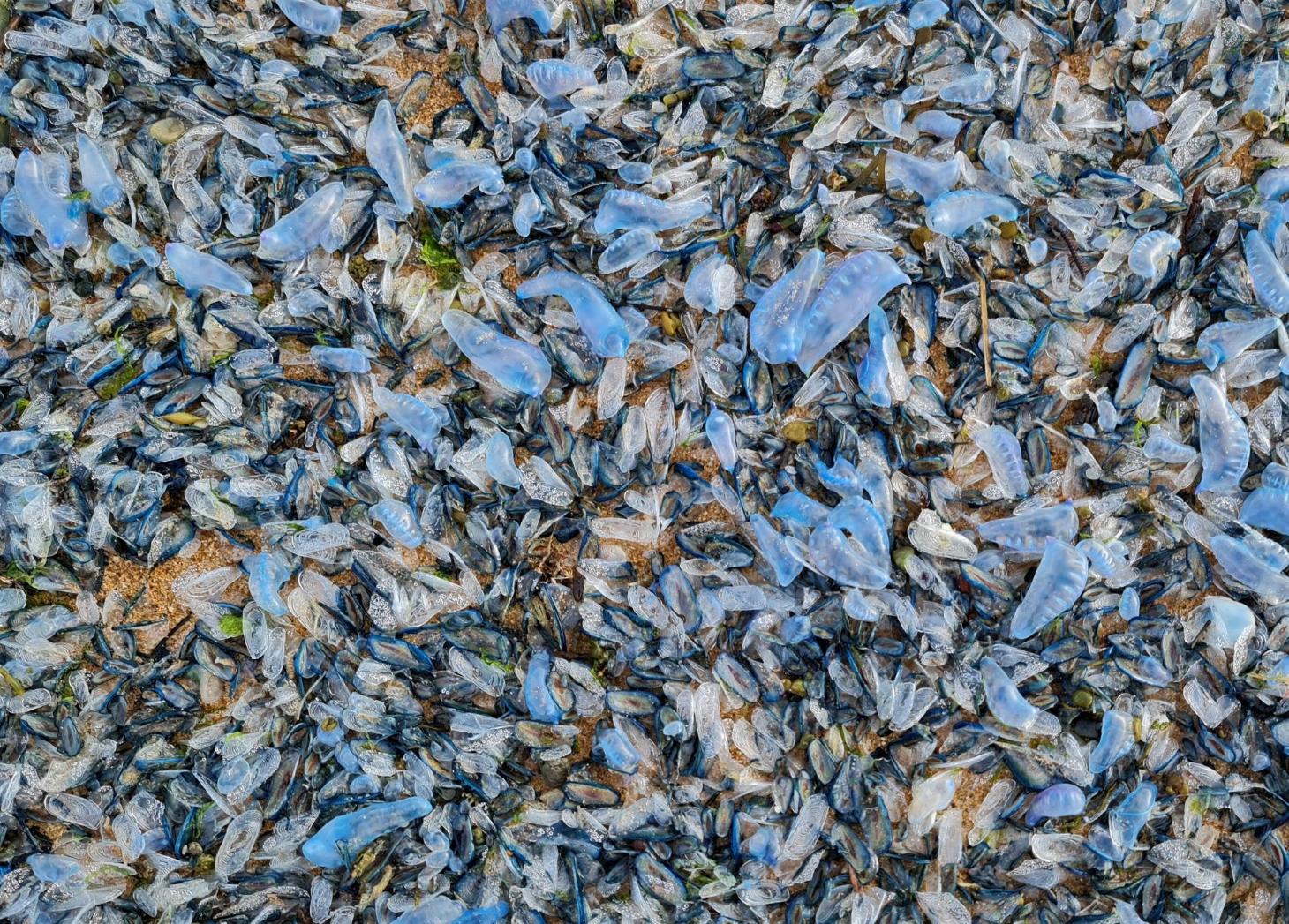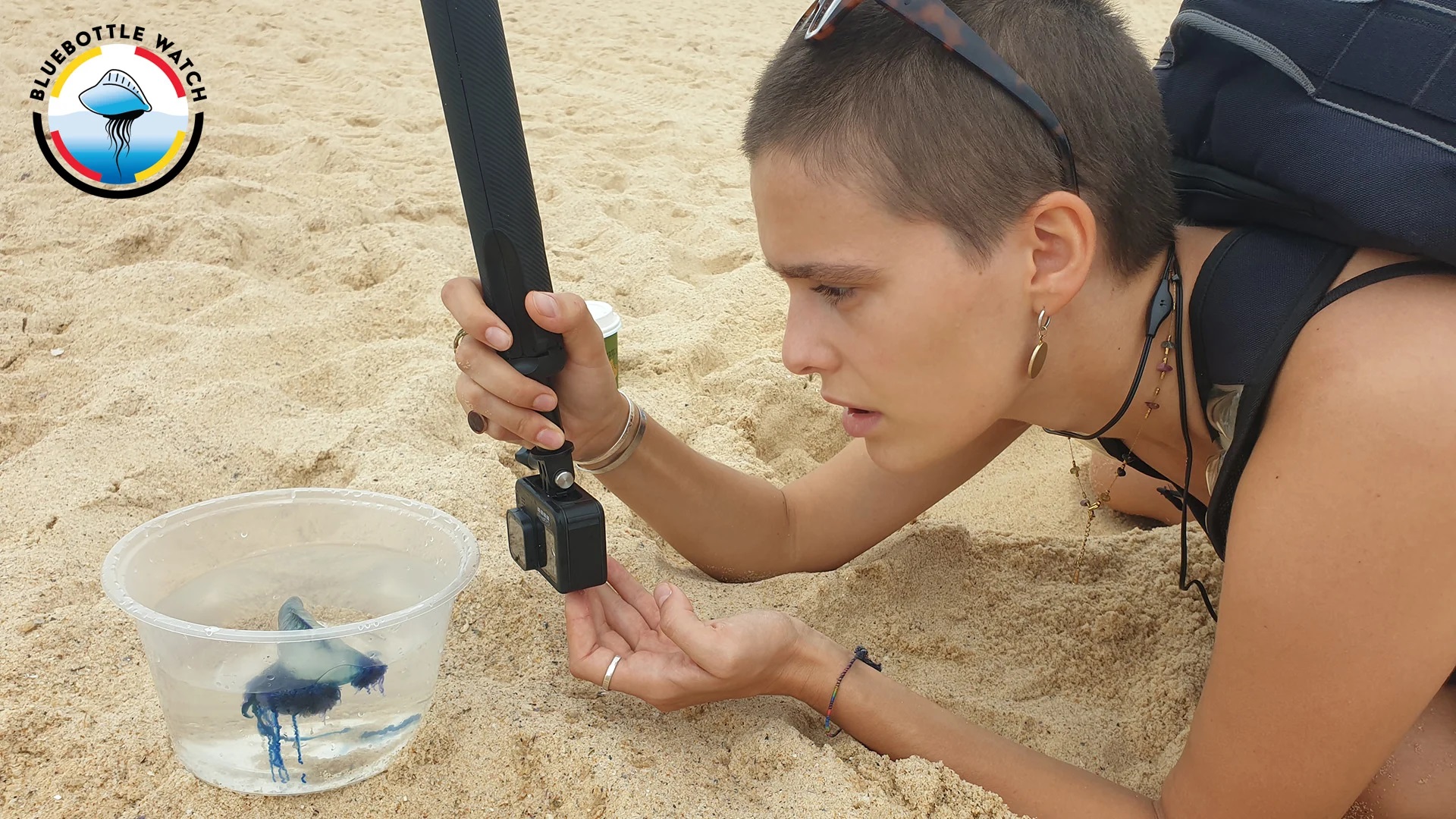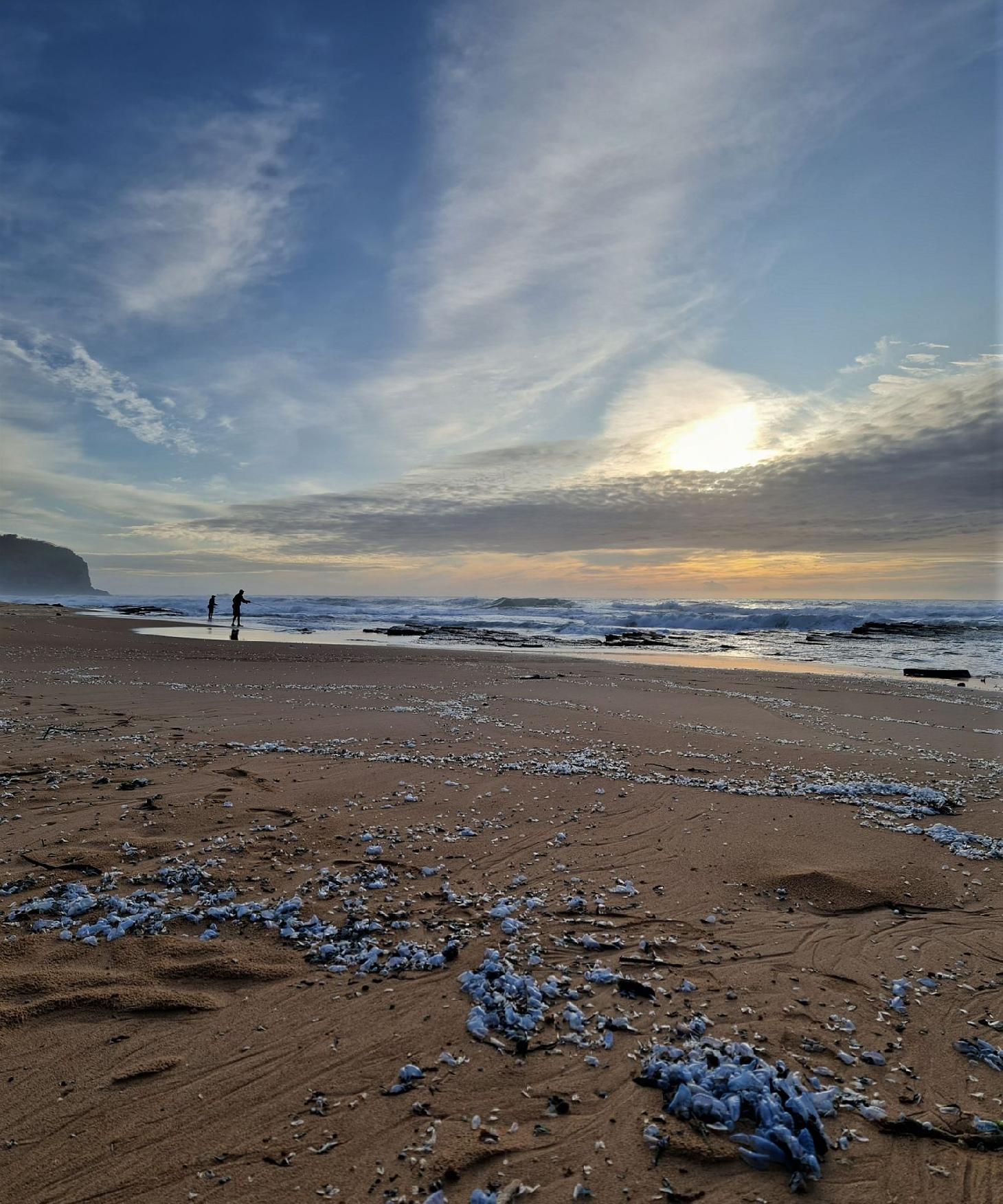BluebottleWatch: A new research project to develop a bluebottle prediction tool for our beaches - calling all citizen scientists!

The majority of the 40,000+ marine stings treated each year are due to bluebottles. This means that bluebottle stings are a leading cause of first aid treatment reported by surf lifesavers! They also have significant impacts on beach enjoyment for many Australians.
Changing weather systems, currents and increasing water temperatures are expected to increase the number of bluebottles and other jellyfish within coastal waters.
Wouldn’t it be great if there was someway the public could find out what the chances of seeing bluebottles at the beach they want to visit?
A new research project, BluebottleWatch, intends to do just this and shed new light on bluebottle behaviour, movements, and the distribution of bluebottles landing on our beaches. The main outcome of this is a bluebottle prediction tool, that will provide a bluebottle likelihood score on beachsafe.org.au. This tool will empower the community to understand the risk of bluebottle stings at the beach they want to visit, and reduce the number of stings treated by surf lifesavers – letting us get on with saving lives.
How will we do this?
Partnering with Griffith University and their Sea Jellies lab at Sea World, Seatech (University of Toulon, France), the Bureau of Meteorology, and the NSW Department of Planning and Environment, we will use an innovative combination of laboratory work, oceanic and beach field surveys, statistical and hydrodynamic modelling to fill the current knowledge gaps and ultimately develop the first bluebottle risk prediction tool for our beaches.

PhD student Natacha Bourg collecting behaviour and abundance data at Maroubra Beach Photo: Dr Amandine Schaeffer, UNSW.
What are bluebottles?
It is not a jellyfish, but a fascinating colonial organism (called a Siphonophore) found predominantly in tropical and subtropical regions. For those citizen scientists out there, Siphonophores are an Order within Hydrozoa, which is a class of marine organisms within the Phylum Cnidaria – the same biological group as the common blubber jellyfish, box jellyfish, and even corals!
The bluebottle was only recently recognised as the same species as the Portuguese Man of War found in the Atlantic (Physalia physalis). In the Atlantic, Physalia physalis is larger, more venomous, and believed to live for approximately a year.
The bluebottle does not swim, but floats at the ocean’s surface and trails a long, stinging tentacle (sometimes as long as 3m) below the surface. The tentacle contains lots of ‘nematocysts’, or stinging cells, which are like mini-harpoons all wound up and ready to discharge in case of finding some food – or accidentally someone’s arm or leg!
The gas-filled ‘pneumatophore’ that floats on the ocean surface (ranging from 1-15cm in length) acts as a ‘sail’ that is subject to wind forces. The sail is oriented to the left or right of the body of tentacles, resulting in individual bluebottles being either right-handed or left-handed. Why? Well, since the sail and pneumatophore play a role in determining how bluebottles ‘drift’, this remarkable adaptation ensures that only half the population may end up beached on the shore, while the other half continue out to sea.
Website: Please visit our website to learn more about the project; https://www.unsw.edu.au/science/our-schools/bees/our-research/bluebottlewatch
Study with us: Know anyone interested in doing a cool PhD involving field work in NSW and conducting experiments in the Sea Jellies laboratory at Sea World (Gold Coast)? Please read the below project brief and get in touch with us!
PhD opportunity domestic- population dynamics and behaviour of the bluebottle_final.pdf
Citizen Science: We also need your help! You can help the project by becoming a BluebottleWatch citizen scientist, while on patrol or just for fun!
Next year, there will some minor changes to the marine stinger hazards so that we can collect data when you log in on your patrol operations app. More info to come when its available!
In the meantime, or for those who don’t use the patrol operations app, we have also created an iNaturalist project to help collate community data at this initial phase of the project. Here we collect photos, locations, counts, and measurements that our citizen scientists upload to the project.
If you see a bluebottle on the beach, first please don’t touch its tentacles! They can still sting you even when they are dead.
Please take a photo and upload it to the iNaturalist platform, ideally from directly above the bluebottle and with an indication of the length of the float/pneumatophore (if you can, include your finger in the photo). If you are really keen, please join our iNaturalist project, where you can add an estimate of the abundance, the size, and even learn how to identify the handedness of the bluebottle (step by step instructions are available in the iNaturalist project).
Check out the citizen science part of the project here: https://www.inaturalist.org/projects/the-bluebottle-in-australia-physalia-physalis
For more information about the project, or if you would like to register your club to be BluebottleWatch champions, please get in touch with Dr Amandine Schaeffer from UNSW Sydney (a.schaeffer@unsw.edu.au) or Dr Jaz Lawes from SLSA (jaz.lawes@sls.com.au).
